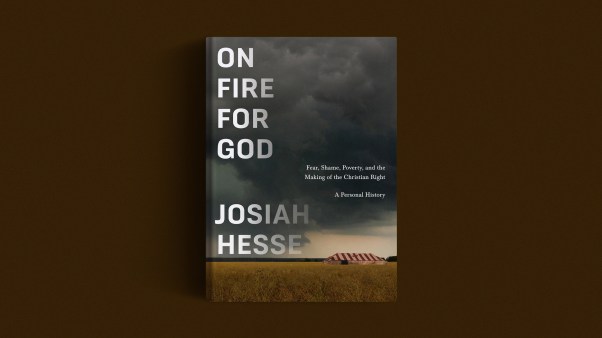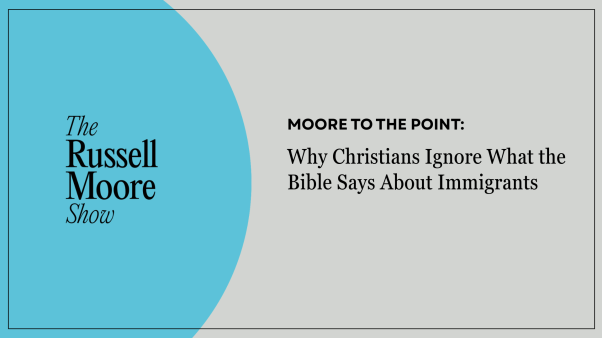Jon Anderson found The Color of Compromise at just the right moment. As the executive director of Collaboration Project, a ministry that connects local churches for the well-being of their city, he was searching for something to help pastors in Madison, Wisconsin, in the summer of 2020.
“We had just had one of the largest marches in state history for racial justice,” Anderson said, “and I was hearing from church leaders: ‘What do we do now?’ ”
Jemar Tisby’s history of racism in the American church, published by Zondervan, came as the perfect answer. Anderson organized a group of 27 ministers from 19 congregations to read the book and discuss ways to channel “the pent-up energy around racial justice into our congregations and our community in tangible ways.”
Sales numbers show that the Madison church leaders weren’t the only ones turning to Tisby in 2020. The first-time author’s year-old book landed on The New York Times Best Seller list that June and cracked the Evangelical Christian Publishers Association’s 100,000-sales mark in October.
That’s an incredible feat—even more remarkable considering that Tisby is only the fifth Black author to make it onto the evangelical bestseller list and his is the only book about racism to ever win the 100,000-sales award.
Publishers including Zondervan, Baker, Moody, Multnomah, Thomas Nelson, Whitaker, WaterBrook, B&H, The Good Book Company, and InterVarsity Press have a long list of authors of color that they have published over the past two decades. They have also produced a long list of books on racial justice. But none of them became bestsellers until Tisby in 2020.
According to industry insiders, this lightning-strike success is the result of a generation of preparation. “We had been moving in this direction for many years to bring in more voices of color,” said Stan Jantz, president of the Evangelical Christian Publishing Association. “I’ve seen really strong and consistent progress.”
But the narrative that publishers paved the way for American evangelicals to focus on racism doesn’t tell the whole story. Neither does focusing solely on the events of 2020. To understand whether this is a historic fluke or a real reckoning moment requires a longer view.
E
vangelical Christian publishing has historically catered to white evangelicals. The industry grew up with the expansion of the suburbs in the postwar economic boom of the 1950s and ’60s, which disproportionately benefited white, middle-class families. The few publishers who tried to serve Black evangelicals, such as Urban Ministries Inc., struggled financially to reach a large enough market.
But successful Christian publishers regularly worked with authors of color, including Tom Skinner, John Perkins, and Howard O. Jones, to produce books challenging white evangelicals to engage issues of racial justice, reconciliation, and equity. Many of these were critical, even groundbreaking works, with bold messages. Some of the titles would still be challenging for a lot of Americans today. In 1970, for example, InterVarsity Press came out with Columbus Salley and Ronald Behm’s Your God Is Too White.
IVP Books senior editor Al Hsu said the hope is always that a title like that will have a powerful impact, finding a reader who is thinking, “I know something is wrong. My church, our categories, our theology are insufficient to acknowledge and help the pain of our Black brothers and sisters in this moment.” Reading a Black Christian’s perspective can change a reader, displacing their experience with a different narrative, a different history, and a new understanding.
As potentially life changing as these books were, few of them sold many copies. The market was dominated more by the sales of Hal Lindsey’s The Late Great Planet Earth than John Perkins’s Let Justice Roll Down, more by Rick Warren’s The Purpose Driven Life than William Pannell’s The Coming Race Wars? A Cry for Reconciliation.
“Books about social issues have always been hard to sell to the public,” Steve Laube, an agent specializing in evangelical markets, told Publishers Weekly. “Despite that, Christian publishers have been proactive for quite some time by pursuing and publishing these thoughtful books because the issues should not be ignored.”
Even if publishers didn’t see immediate financial success with books by authors of color, there were economic reasons to keep trying. They hoped to expand the market for their books, and there was always the possibility that Black authors could open the doors to Black Christian book buyers.
As historian Daniel Vaca explains, this is part of the larger economic story of “market segmentation.” Publishers, like other businesses in the 20th century, innovated by targeting specific customers and defining consumers by demographic categories. “White evangelicals” was a good segment. “Black Christians” was a promising one.
This is not to say it was all motivated by money. In Christian publishing, ministry motivations and personal relationships play a major role in deciding what gets produced and promoted.
Zondervan increased its list of Black authors after Stan Gundry joined as senior vice president in 1981. Early in his tenure, Gundry met Matthew Parker, then a professor at William Tyndale College and later founder of the Institute for Black Family Development. Parker coedited two books for Zondervan, but just as importantly, he connected Gundry to Black authors such as Pannell.
That personal connection made it possible for Zondervan to put out a book with the title The Coming Race Wars? just a year after the nation was shaken by riots in Los Angeles following the police beating of a Black man named Rodney King.
Market segmentation doesn’t tell the whole story of how Gundry published that book challenging white evangelicals to think more critically about race and racism, but its logic helped him make the case for forging into new publishing territory.
A glance at the bestseller lists for the past 15 years shows that the Black Christian authors who have sold the most books are Priscilla Shirer, T. D. Jakes, Tony Evans, and former football coach Tony Dungy. Their books appeal to white evangelicals without getting caught up in controversial contemporary issues, while also expanding the traditional market to include Black Christians.
Commercially, books on racism were never the best bet, but publishers kept steadily producing them anyway.
O
ne popular approach to raising the issue of racism over the years was the Black-white author duo. These books put personal relationships at the center of the questions about race. They reinforced a widely held evangelical conviction, as historian Seth Dowland has written, that “racial reconciliation ran through the transformation of individual lives rather than through systemic changes.”
InterVarsity, for example, published More Than Equals in 1993, coauthored by Chris Rice and Spencer Perkins (son of John Perkins). The duo was touted as a model for the hope of reconciliation. The same format was replicated by Moody Press with Breaking Down Walls, coauthored by Raleigh Washington and Glen Kehrein (and coforwarded by Billy Graham and John Perkins), and by Baker with Letters Across the Divide, written by David Anderson and Brent Zuercher.
That vision of racial reconciliation declined in Christian publishing in the early 2000s because of concerns about whether it worked. Scholars such as Michael O. Emerson and Christian Smith articulated sociological limits of focusing on individualistic and relational solutions to racism, while writers such as Willie J. Jennings, Lisa Sharon Harper, and Brenda Salter McNeil started to argue against the approach theologically.
By 2006, evangelical books on racism were more likely to take the approach of Edward Gilbreath’s Reconciliation Blues: A Black Evangelical’s Inside View of White Christianity. Gilbreath, now a vice president at Christianity Today, argued that individual and relational responses to racism were important but not sufficient. Christians would also need to address the social and structural realities.
The most recent wave of Christian publishing on race and justice, including The Color of Compromise, has followed Gilbreath’s trajectory. These books focus on structural issues in evangelical theology, the church, and American society writ large.
In 2018, for example, titles included I’m Still Here, by Austin Channing Brown; Insider Outsider, by Bryan Loritts; Dear White Christians, by Jennifer Harvey; Woke Church, by Eric Mason; and Be the Bridge, by Latasha Morrison.
This isn’t an accident. Christian publishers have been intentional about pursuing these projects.
“We often talk about evangelicalism as a river, with a left bank and right bank. We try to be in the middle and be a broker of ideas,” said Ryan Pazdur, editor of The Color of Compromise at Zondervan. “We focus on diversity and cultural issues, race, justice, history.”
So why was Tisby’s book the one that met the need of evangelicals grappling with racial injustice in 2020?
W
hen Tisby began to shop his book proposal in 2017, a half dozen publishers were interested. Zondervan offered a significant advance.
“To me, this indicated two things,” Tisby said. “One, their resources. And two, their confidence in me and the book.”
For a new Black author in particular, this confidence was essential. In order for the book to be taken seriously, Tisby thought, a publisher would have to put some institutional weight behind it. He wanted to write about the failure of white Christianity to reckon with race and deal directly with the history of violence, compromise, and cowardice. He knew many would rather look away.
“The story is worse than most imagine,” Tisby said. “I was very honest with the team at Zondervan about speaking forthrightly about race, about knowing from personal experience how people push back against these conversations.”
For Zondervan, this challenge came at just the right time. The large Christian publisher had recently launched a new imprint, Zondervan Reflective, designed to make room for “tough questions,” Pazdur said. The publisher also wanted the imprint to expand its base of authors, adding some diversity and hopefully reaching new markets of readers.
Tisby’s proposal, originally titled “Courageous Christianity,” ticked all the boxes.
Tisby had his own institutional support, a “Black Christian Collective” called The Witness. He and a few collaborators started the organization as the Reformed African American Network in 2012 and rebranded as The Witness in 2019. The nonprofit media company gave Tisby some additional support and raised his visibility as an author.
When the country shut down in the first weeks of the COVID-19 pandemic, Tisby saw his speaking engagements in support of the book dry up, and he and his publisher expected The Color of Compromise to fade from public consciousness.
“Everything was canceled,” Tisby said, “and I told myself, ‘Well, it was a good run.’ ” He planned to return to his PhD work.
But then May 2020 became one of the most catalyzing months of racial tension in recent American history. News and video of the killings of unarmed Black people rocked the country. First came viral footage of three white men shooting Ahmaud Arbery to death in Georgia. Two weeks later, the FBI opened an investigation into the death of Breonna Taylor, who was killed by police in her apartment in Louisville, Kentucky. And at the end of the month, video surfaced of a Minneapolis policeman kneeling on George Floyd’s neck, pinning him to the ground until he was unconscious and then continuing to kneel on him until he died from lack of oxygen.
The summer of 2020 was also the height of state-mandated lockdowns and stay-at-home orders. Stuck inside or at home, millions of Americans turned to books to fill the time. After an initial drop in the early weeks of the pandemic, book sales increased throughout the spring and summer, according to marketing research firm NPD Group, and by August had recouped the year’s losses. By the end of the year, the book industry had recorded its best sales in a decade.
Many churches—with in-person gatherings paused—also launched book groups meeting on virtual video platforms. When those groups looked for something good to read together, a lot of them found The Color of Compromise.
“I got the sense that churches were ready to learn and to understand a perspective other than one they had been raised with,” Pazdur said.
“I do think the pandemic actually forced people to give sustained attention to racial justice in ways that they might not have had they not been confined to their homes and very small areas,” Tisby said. “People had to pay attention to what was going on in the news politically and socially, and that all coincided with the interest in my book.”
Still, a satisfyingly complete account of what made Tisby’s book the blockbuster of the summer remains elusive, even for Tisby. “I was completely flabbergasted,” he said.
T
he success of The Color of Compromise might be a watershed: the inflection point when swaths of white evangelicals start to take racism, and Christian complicity and compromise with racism, seriously.
“You never know how long a moment is going to last,” editor David Bratt told Publishers Weekly, “but this one seems to have staying power. … There is a real sense from people that they want to do what is right and didn’t realize until now their compliancy in this system.”
Tisby isn’t so sure. “I don’t want to make too much of it,” he said. “It’s a similar issue we find in church congregations where we celebrate the presence of racial and ethnic minorities without critically examining equity and inclusion…. It is not a negative, but more work needs to be done.”
In fact, The Color of Compromise could be a “costly success,” according to Vincent Bacote, professor of theology at Wheaton College.
“The book engendered strong reactions in some sections of white evangelicalism,” he said. Not everyone is ready to reckon with “the long shadow of Christian racism.”
In the past year, other evangelical titles have been showing people the way forward, next steps, and tangible alternatives. Some have received awards. Some have received rave reviews. None has been received with the same urgency or sales, though.
The Color of Compromise’s long-term significance hinges on whether the institutions that pushed for this conversation about race will continue to do so, and whether white evangelicals will remain open, as they were in 2020. The history of Christian publishing indicates that lasting change will require individuals and institutions both.
Daniel G. Hummel is a religious historian and the director for university engagement at Upper House, a Christian study center located on the campus of the University of Wisconsin–Madison.














